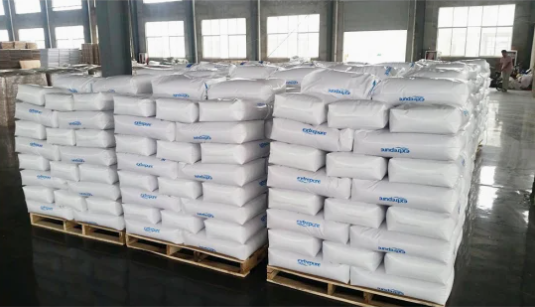
During the use of ion exchange resin, its performance will change. The main reasons for this phenomenon are: first, the chemical structure of the resin is destroyed; second, impurities in the water contaminate the resin. The former is resin deterioration, which is irreversible damage, while the latter can be revived by appropriate methods. This article shares the pollution mechanism, pollution prevention and control methods and resin recovery methods of ion exchange resin for reference by water treatment professionals.
I.Resin deterioration The main reasons for resin deterioration are oxidation and aging, which are described as follows:
1. Resin oxidation Oxidants contained in the water, such as free chlorine, oxygen, nitrate, etc., will cause the resin to oxidize and deteriorate. The oxidized resin is mainly cation exchange resin. The degree of damage caused by oxidation of anion exchange resin is generally lower than that of cation exchange resin. This is because:
(1) anion exchangers are usually placed in cation exchangers;
(2) when anion exchange resin is oxidized, the quaternary amino groups on it will be converted into tertiary, secondary and primary groups, which is only a weakening of alkalinity and is not considered complete deterioration. The oxidation of cation exchange resin is the breakage of carbon bonds, which is manifested in the macroscopic form of increased resin volume, resin fragmentation, decreased working exchange capacity and increased operating pressure.
2. Resin aging Ion exchange resins are high molecular organic compounds. As the use time increases, they will naturally age. The factors affecting resin aging are as follows:
(1) Relevant to the resin type: the aging rate of cation exchange resins is slower than that of anion exchange resins.
(2) Relevant to the ion form on the resin: the aging rate of Na-type strong acid cation resins is slower than that of H-type resins; the aging rate of salt-type strong alkaline anion resins is slower than that of OH-type resins. (3) Relevant to the operating temperature: the higher the temperature, the faster the aging rate.
II. Resin contamination
1. Metal contamination
The process links where metal contamination of resins may occur are:
(1) Cation exchange resin softened by ion exchange;
(2) Anion exchange resin in deionized water.
The main reasons for metal contamination of resin are:
(1) Metal oxides formed by rust and corrosion of pipelines wrap the resin surface;
(2) Resin is regenerated with by-product hydrochloric acid (the national standard for industrial synthetic hydrochloric acid has requirements for iron content, but the standard for by-product hydrochloric acid does not have such requirements);
(3) The alkali used for regeneration contains metal oxides;
(4) The amount of coagulant added is too large.
The appearance color of the resin becomes darker after iron contamination, and the working exchange capacity decreases. The method to determine whether the resin is contaminated by iron is: take 200~300g of regenerated resin and put it in a beaker, add hydrochloric acid (the amount added is 10% of the volume of the beaker), soak for 24h, stir once every 2h, and measure the iron in the solution. If the iron content is ≥150mg, it can be determined that the resin has been contaminated by iron.
2. Organic pollution
Organic pollution mainly occurs in strong base anion exchange resins. Organic matter mainly comes from the aging and degradation products of influent and external cation resins. The main theories for resin contamination by organic matter are: van der Waals force, ion exchange, and macromolecular organic matter blocking ion exchange channels. After the resin absorbs organic matter, it cannot wash it off during the regeneration process, so it accumulates more and more inside the resin. The macroscopic manifestation is a decrease in the working exchange capacity and an increase in the amount of flushing water.
3. Suspended matter pollution
Suspended matter pollution mainly occurs on cation exchange resins. The macroscopic manifestation is a decrease in working exchange capacity, resin agglomeration, bias flow, a decrease in periodic water production, and a decrease in instantaneous water production.
III. Resin deterioration and pollution prevention
(1) Install an ORP detector at the inlet water of the cation exchanger;
(2) Control the inlet water temperature between 5 and 40°C (the regeneration liquid temperature also needs to be controlled).
(3) The inlet pool is well sealed to prevent the entry of sand and dust.
(4) The inlet water of the ion exchanger cannot be prevented from losing resin during backwashing by adding a mesh sleeve, because this will cause the suspended matter entering the ion exchange resin to be unable to be discharged through backwashing.
(5) When the iron content of the water source is high or when treating the process condensate of a chemical plant, an iron remover should be designed.
(6) When the organic matter content of the inlet water is high, macroporous resin should be used.
IV. Resin recovery
(1) Metal pollution: Soak in 10%~15% hydrochloric acid for 6~24h, or add citric acid or EDTA solution to increase the complexation of metal ions.
(2) Organic pollution: Prepare a mixed solution of 1%~4% sodium hydroxide and 5%~12% sodium chloride, soak for 12~24h, and add dodecyl surfactant appropriately for better effect.
(3) Suspended matter pollution: Air scrub and backwash the resin. If there is an external cleaning tank, it is best to transport the resin to the external cleaning tank for air scrubbing.
Summary
Ion exchange resin is relatively expensive. Good operation and maintenance of ion exchange resin can greatly reduce water treatment costs and labor intensity of workers. The above pollution prevention and recovery methods can extend the service life of the resin.
Extrepure Resin(Shanghai) CO.,LTD
